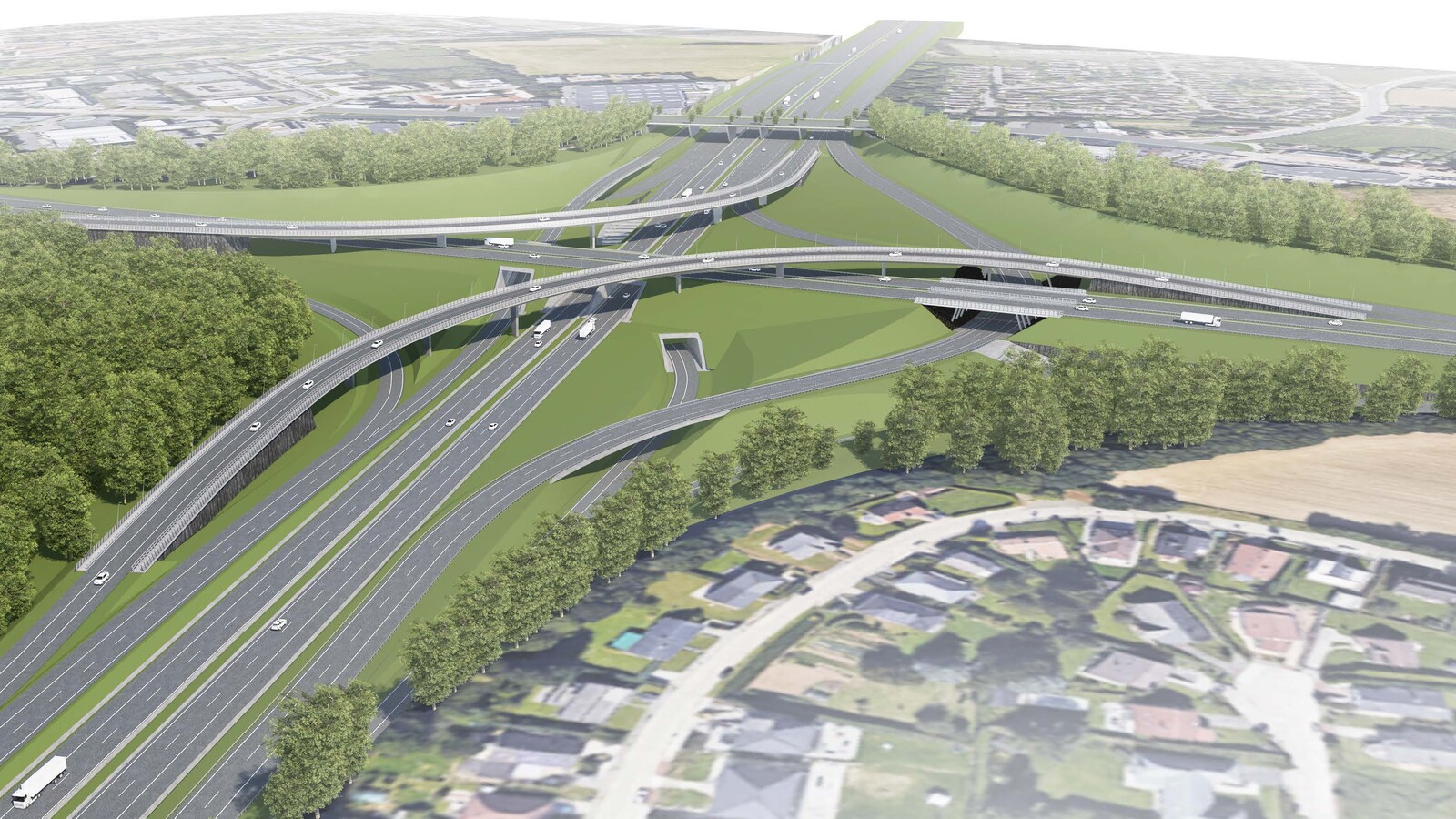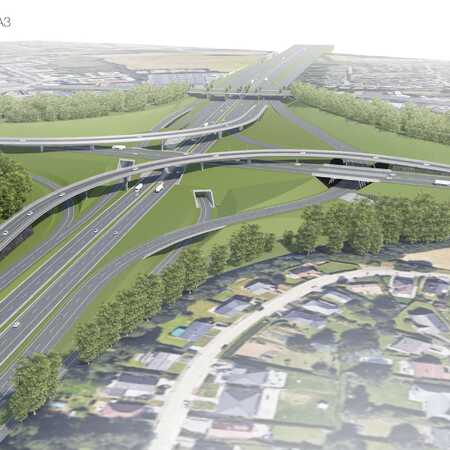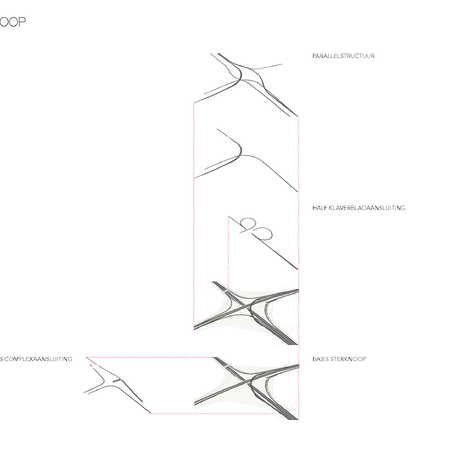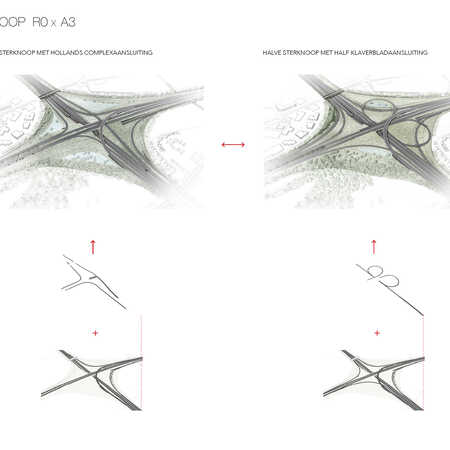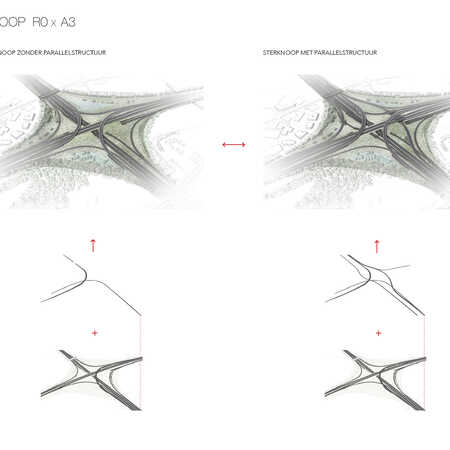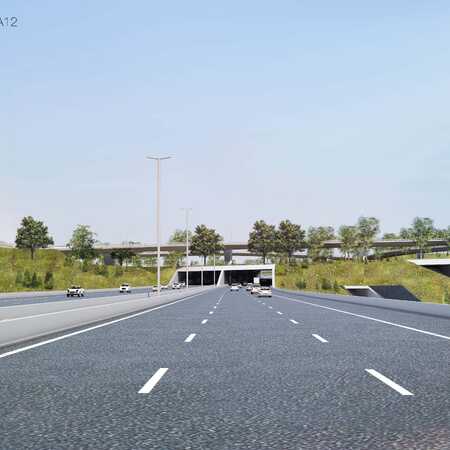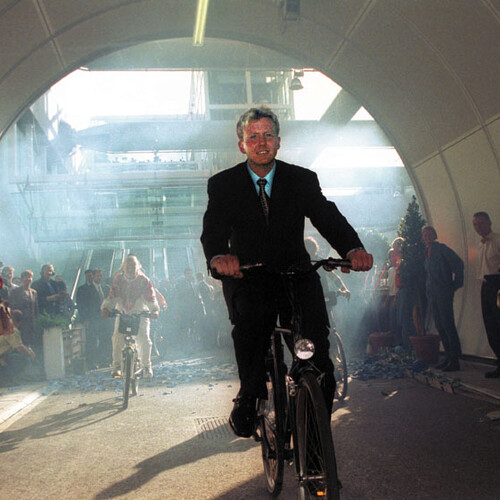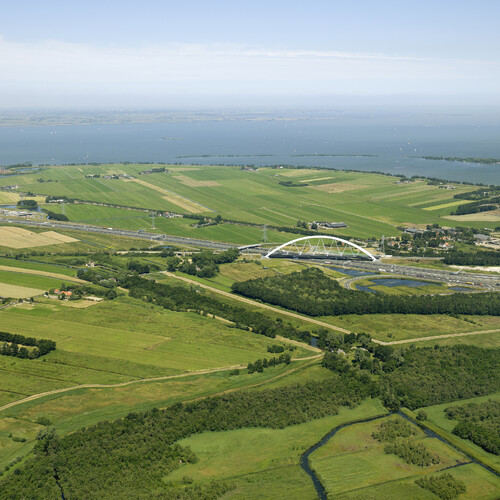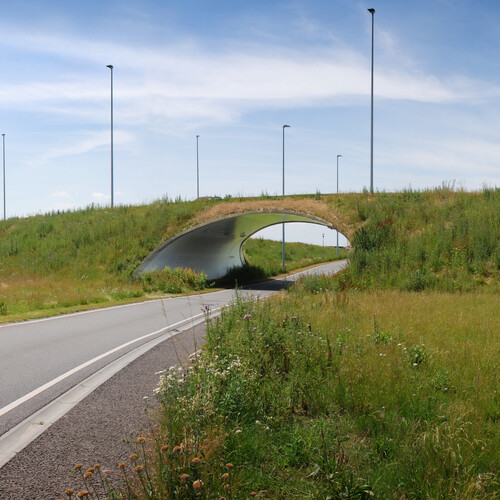The future of the Ring around Brussels
As is the case in many large cities, the R0, the ring-road around Brussels, is in need of drastic modernization. The plans seek to achieve large-scale restructuring of the urban ring-road. A network of cycle routes and ecological corridors will be introduced and water storage improved.
Architectural studio ZJA has been involved in the development of the plans for this major renovation and it has carried out a study into the possibility of redesigning the traffic intersections to the north-west and north-east.
Some of the traffic intersections around Brussels were built according to the turbine interchange model that was current fifty years ago. Covering a large area of land, the traffic lanes sweep around each other in wide circles. Usually only two levels are built, and the viaducts and flyovers are supported by heavy, thick concrete pillars. Because in those days such interchanges were well away from built-up areas, there was plenty of space. In places they have been modernized to some extent, but they remain space-guzzling behemoths.
Nowadays the aim is to reduce pressure on the existing built environment and the landscape around it as far as possible. The quality of life close to the Ring, the avoidance of obstruction to local roads and the laying of new cycle routes are of great importance in plans for the future drawn up by the authorities. The aim is to stimulate what is known as a ‘modal shift’. Furthermore, ecological factors are of relevance these days, such as the importance of water storage and infiltration, the enhancement of green corridors and the reintroduction of freely flowing waterways and streams.
The conclusion of the research was that designs for traffic intersections around Brussels must be compact and easily adaptable to specific local circumstances and changing demands in the future.
More compact, clever and green
One good example of ZJA’s vision is the design for the intersection on the north-west side of the R0, where the A12 meets the Ring around Brussels. The proposal for the Strombeek-Bever interchange involves four rather than two levels. This enables the different types of traffic to be separated more effectively and means that vehicles can continue on their way with as little deviation as possible. A tunnel under the intersection allows for the separation of through traffic on the E19 from the urban ring-road. The local roads and cycle routes follow a direct, unobstructed course at ground level.
Seen from above, this is a major change. An area that was dominated by motorways laid far apart and supported by broad viaducts will soon be an extensive green zone with a compact interchange at its heart that is integrated into the landscape and includes intersecting straight or slightly curving highways. In this vision the A12, which historically formed a connection between the park that surrounds the royal palace and the gardens of Meise, is improved by the introduction of a green axis with cycle paths and local roads. Space reserved for the Brabantnet tram connection is integrated into it. On all four sides of the intersection, space has been gained for green buffers, and an ecological corridor over the Ring is provided for. The compact spatial integration of the traffic flows means that a great deal of space is given back to the landscape and the residential environment. Because of the direct connections, local traffic and cyclists will have far less difficulty getting past the motorway intersection.
Adaptive nodes
At Sint-Stevens-Woluwe too, where the A3/E40 joins the Ring around Brussels, the ZJA design enables a great deal of space to be gained. Here the embedding of the roads in four levels is smoothly integrated as a result of the slope it introduces, which connects with the hills of the Brabantse Heuvelland to the east.
ZJA’s designs for the traffic intersections in the Ring around Brussels are based on a model known as the star knot, adjusted to the needs of each location. This enables the greatest gain in space as well as opportunities, in this case, to integrate the motorways into the landscape by means of tunnels and cuttings. For example, should it turn out in the future that it is better to keep through roads and local roads completely separate, then in this design it is relatively simple to introduce a parallel structure. The design makes scaling down to a more modest system of local entries and exits just as easy to achieve. Here adaptive means that little or no demolition is required for adaptations to be made. The adaptive intersection has been designed as a sustainable node for the future.
The model and the building blocks
In order to improve the visual aspect as well and to give the project an identity, ZJA’s design for the Ring around Brussels is based on a family of externally related elements, known as its building blocks. These are also used in constructing the intersections. The guiding principle is always to minimize as far as possible the footprint in land use and the visual impact on the surroundings. This means among other things the use of slim, disc-shaped supports that are tapered towards the bottom, sharply chamfered decks to fly-overs, and viaducts that let the maximum daylight through to the space underneath. Lightness and harmony are the norm throughout, and this results in sloping columns that follow the line of the slopes in the bank, and the use of light colours and transparent sound barriers. The viaducts are incorporated high into their landfalls, to interrupt the surrounding landscape as little as possible, and they figuratively separate the flyovers from the base by the use of the maximum possible spans. With these standard elements, an intimidating no man’s land of asphalt and concrete can be transformed into a green area, into which connecting roads are cleverly integrated, crossing each other comfortably without placing a heavy burden on the environment.
Architect: ZJA
Client: De Werkvennootschap
Commissioned by: Engineering consultancy MoVeR0 (Sweco, Arcadis, ZJA, Frank van Hulle, Cluster en Mint)
Year: 2017-present
Project: #1018
